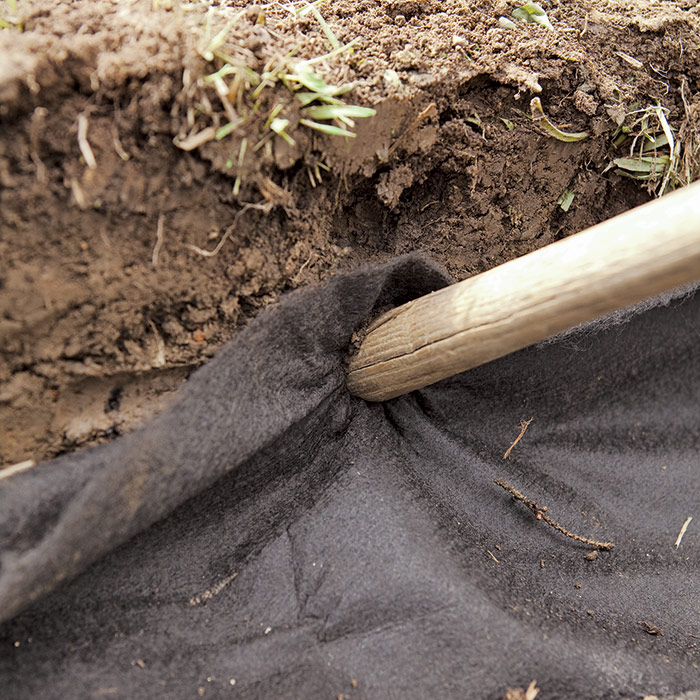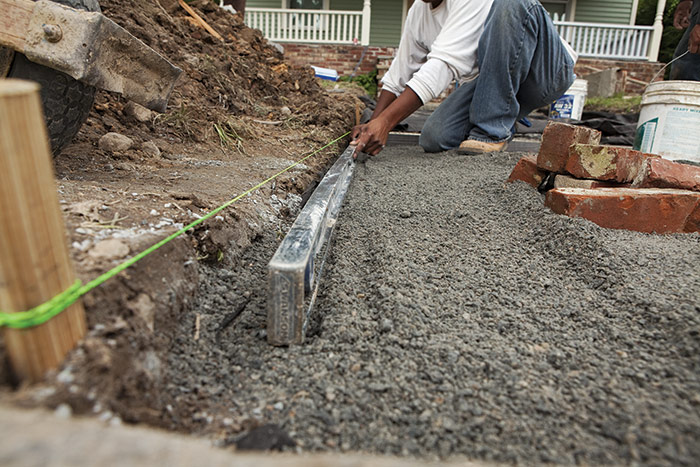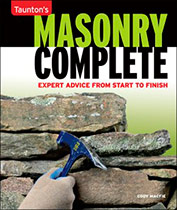Brick Walkway: Preparing the Base
Establish your grade and lay a base of compacted gravel and stone dust to ensure that your bricks stay exactly where you want them.
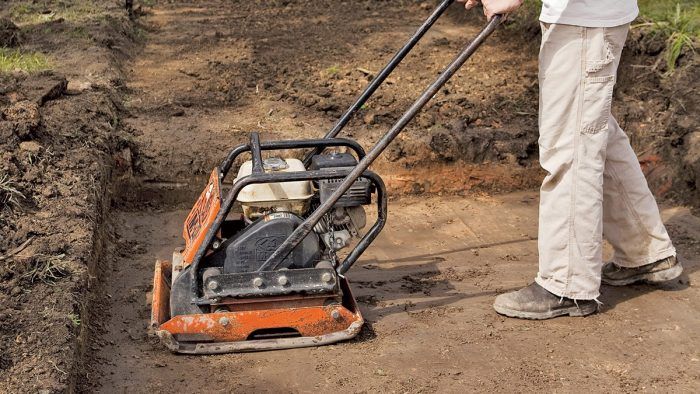
Excavation
Establishing a rough layout for excavating a straight path is easier than for a curved path (though a straight path is not always as attractive). Drive stakes at each side of the walkway, tie mason twine to them, and adjust the stringlines so they are 90 degrees to the house or porch. You can use a framing square 1 to find the angle, or establish square using the 3-4-5 rule. Extend the stringlines the entire length of the walk. Make sure they are parallel and secure them to stakes at the street end of the path 2. Once the stringlines are set, mark reference lines on the ground for excavation 3.
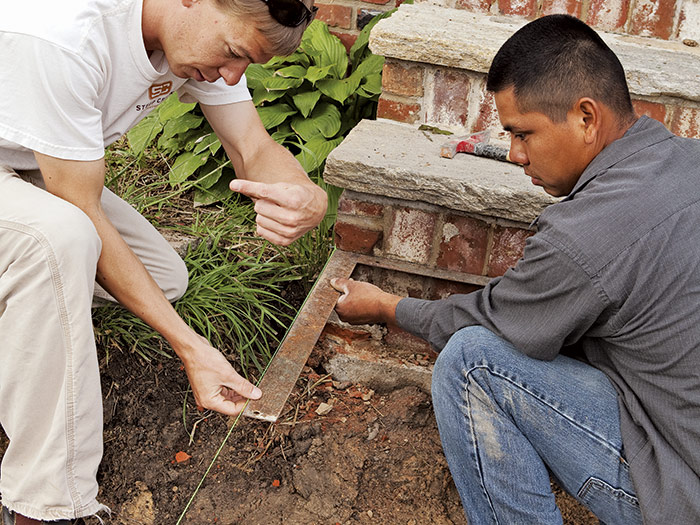
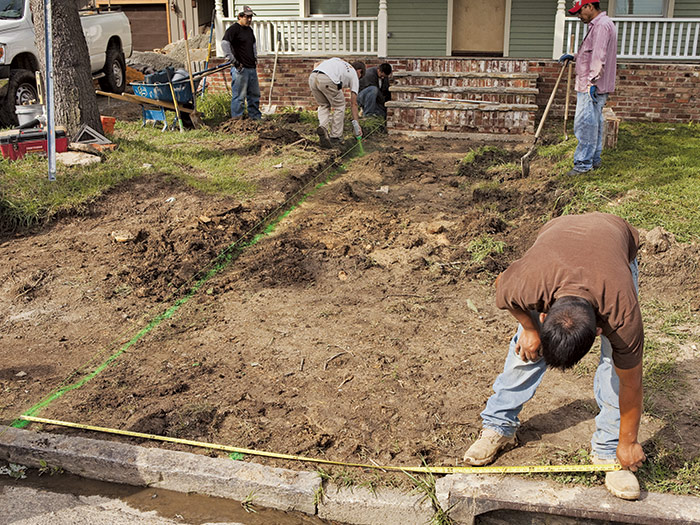
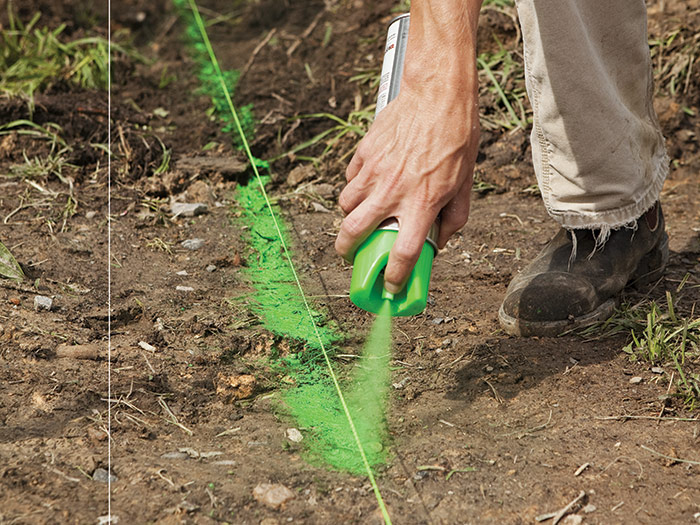
If the grade is irregular, level the stringline using a line level. Measure down from the twine to gauge the excavation depth in any given spot 4.
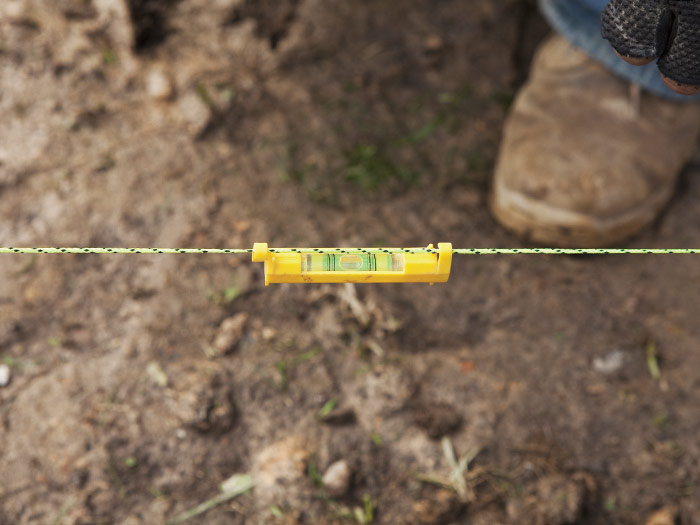
Dig down approximately 8 in., cutting the sides straight and plumb as you dig. This will give you enough depth for 3 in. of compacted gravel, 2 in. of quarry dust (stone dust) or sand, and the brick. Even for a narrow walk, 8 in. of excavated soil is a considerable amount, so find a spot in the yard where you can use some fill or plan on hauling it away 5.
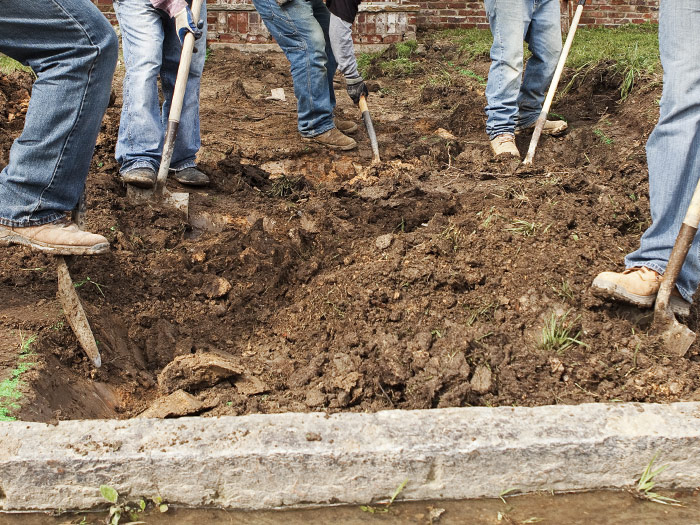
| TRADE SECRET: If a finished landscape requires you to precisely lay out the finished walk before excavating, consider using batter boards that can remain in place for the duration of the project. |
Get Help with the DiggingA digging crew can make short work of an otherwise all-day job. For the project shown here, a five-person crew dug the walkway bed and prepared it with gravel. They took roughly 11⁄2 hours to do this. That’s just about equal to an 8-hour day of nonstop labor for one person (or more, figuring in fatigue). Considering the work involved, it’s well worth plying some friends with some pizza in exchange for a little grunt-work help. |
Installing the Base
Once you’re done with the excavation, move a compactor over each area several times until the soil is hard and smooth. The longer you pack, the less chance settling will be an issue later 1. Then spread landscape fabric over the soil to discourage weeds from growing through the walkway 2. Fold the fabric up the sides of the excavation, secure with soil pins, and cut it just below finished grade. Spread gravel over the landscape fabric and rake it to a depth of 3 in. 3. Then repeatedly run the compactor over the gravel until the bed is hard and smooth 4.
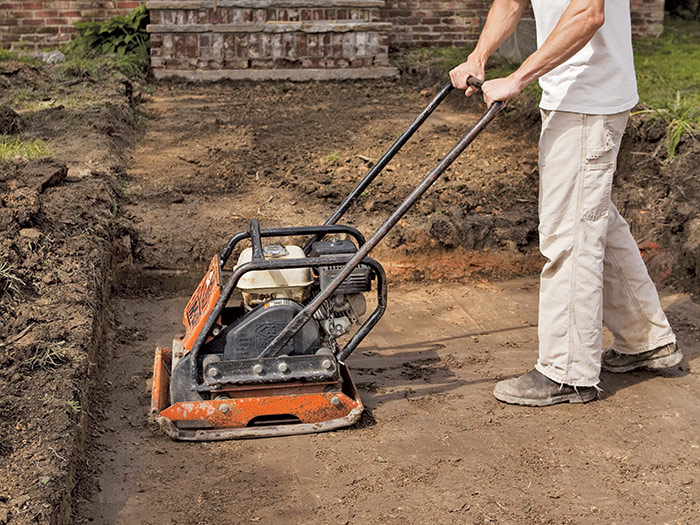
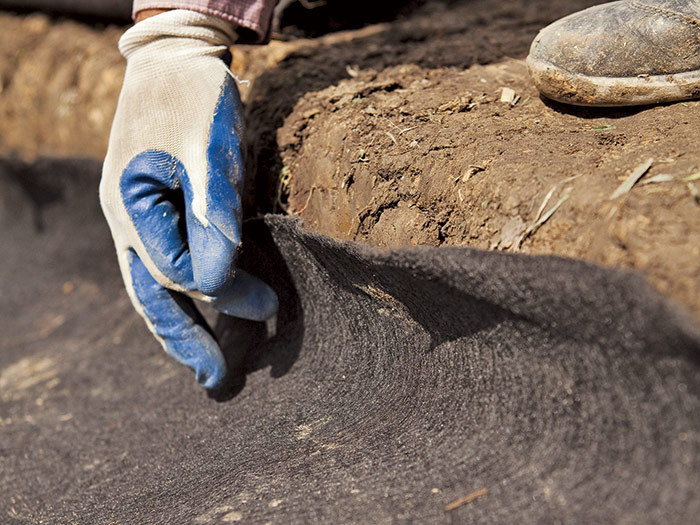
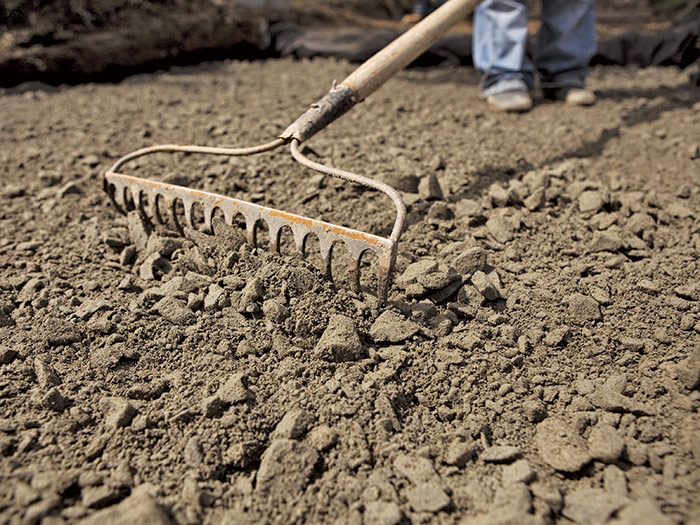
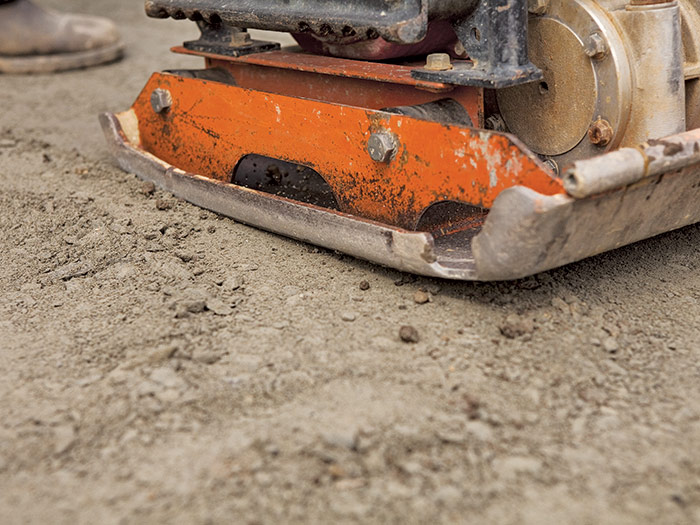
If your walkway has a step, install a footing and concrete block for it now.
Next, add quarry dust (or “fines”) to a depth of 1 in., rake the surface smooth, and compact the entire area again 5.
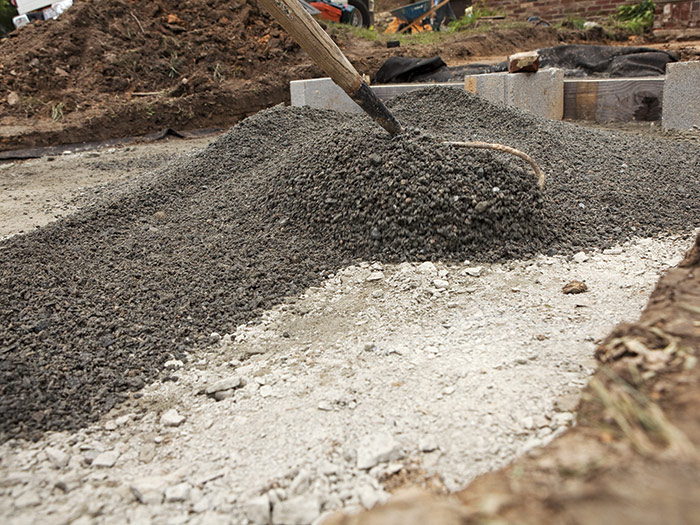
Now you’re ready to set up new stringlines to mark the elevation on the borders of the walkway. Unlike the reference lines used for excavation, the layout stringlines need to be as accurate as possible, so take the time to position them correctly. If you have a long walkway, or a complicated layout with multiple steps and turns, it’s worth the cost of renting a transit or laser level to really dial in the layout elevations. With a brick, check the elevation of the compacted quarry dust against the stringline. There should be a 1-in. gap between the top of the brick and the twine 6‚ to allow room for mortar under the perimeter bricks and sand under the bricks in the field.
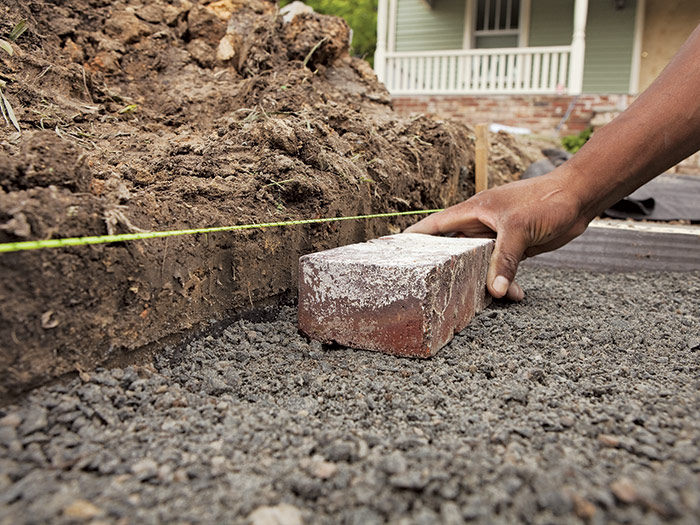
| TRADE SECRET: Use a level or a straight board to screed the fines flat under the string. Irregularities along the edges can throw off the overall flatness of the walkway, so it’s worth making the effort to get it right. |
Excerpted from Masonry Complete (The Taunton Press, 2012) by Cody Macfie
Available at Amazon.com.

